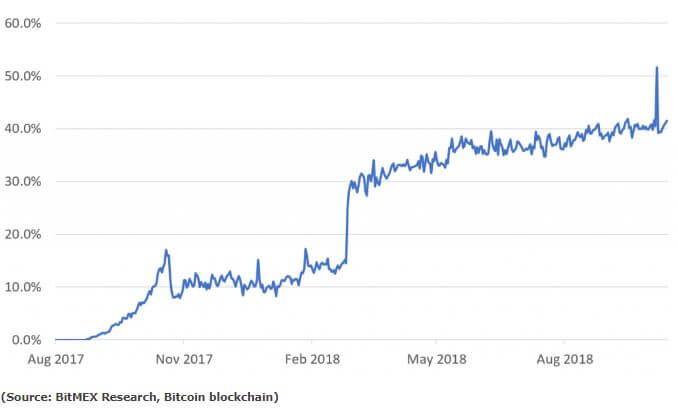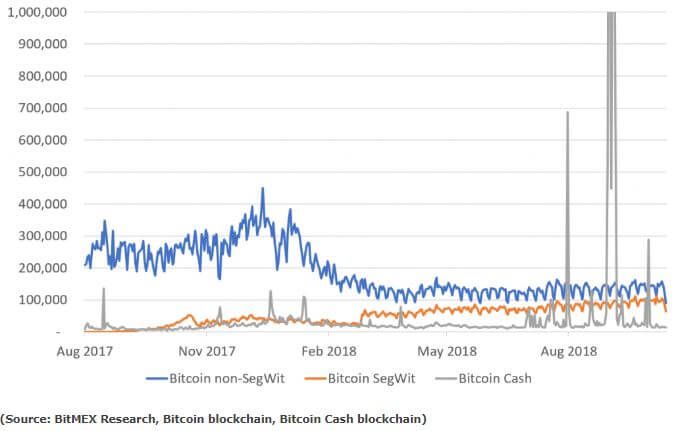The world’s largest crypto trading platform BitMEX compares the use of the two competing Bitcoin models SegWit and Bitcoin Cash in a report. The analysts note that the SegWit option, which has been chosen by the majority, is still ahead of the field. However, Bitcoin Cash’s trading volume is also growing.
The dispute over direction within the Bitcoin community kept the crypto scene in constant suspense in 2016 and 2017. If one side wanted to tackle the scaling problem with the SegWit update and a long-term second layer solution, the other side argued for an expansion of the block size. Until the end, attempts had been made to keep the store together with compromises such as SegWit2x and to prevent the Bitcoin community from breaking up.
But even after the inevitable hard fork was finally carried out in August 2017, the dispute did not break off. The only difference was that it was no longer a dispute of direction within the Bitcoin community, but a battle for the sovereignty of interpretation between the two newly formed camps. The debate between the representatives of Bitcoin (with SegWit) and Bitcoin Cash mostly focuses on user-friendliness on the basis of good scalability.
Contents
BitMEX: SegWit used more frequently
BitMEX, the crypto marketplace with the largest volume traded worldwide, compares both scaling solutions in its latest report. The report looks at the proportion of SegWit transactions on the Bitcoin blockchain and the number of transactions with SegWit and Bitcoin Cash. The authors of the report conclude that the solution once preferred by the majority of the community continues to dominate.
SegWit transaction volume:

Since the chain split, SegWit adoption has been growing slowly but steadily. The chart, which indicates the daily Bitcoin transaction volume, is basically in an upward trend. It can be said that SegWit is now used in a good 50 percent of all daily Bitcoin transactions. In the long run, SegWit seems to be gaining acceptance.
SegWit vs Bitcoin Cash:

While the number of SegWit and non-SegWit transactions on the Bitcoin blockchain move towards each other, Bitcoin Cash lags behind. On average, the daily transaction volume of Bitcoin Cash is about ten percent of the Bitcoin transaction volume. The “stress tests” carried out for Bitcoin Cash in August and September, however, cause outliers to move upwards and distort the picture somewhat. At that time, the Bitcoin Cash network was tested with a series of transactions – and stood the test.
The stress test also makes itself felt when comparing the cumulative transaction volume. This shows that Bitcoin Cash got off to a better start than SegWit. However, this is explained by the sluggish initial adaptation of the SegWit update for Bitcoin transactions. Over the course of 2018, however, SegWit managed to clearly differentiate itself with a steady increase in transactions. It was not until August and September that Bitcoin Cash transaction volumes formally exploded and managed to catch up with the number of SegWit transactions in one jump. In total, almost 22.1 million SegWit transactions have been executed since the hard fork, compared to 18.9 million Bitcoin cash transactions.
Conclusion
In the overall view, it can, therefore, be said that both payment methods are popular. The share of SegWit transactions at Bitcoin and thus also the average daily transaction volume is constantly increasing. Bitcoin Cash, on the other hand, is characterized by a pronounced volatility in daily use and therefore does not show a clear growth curve.
In addition, the stress test distorts the number of transactions carried out in favor of Bitcoin Cash. More than a year after the chain split, the SegWit warehouse is currently a (small) winner.
